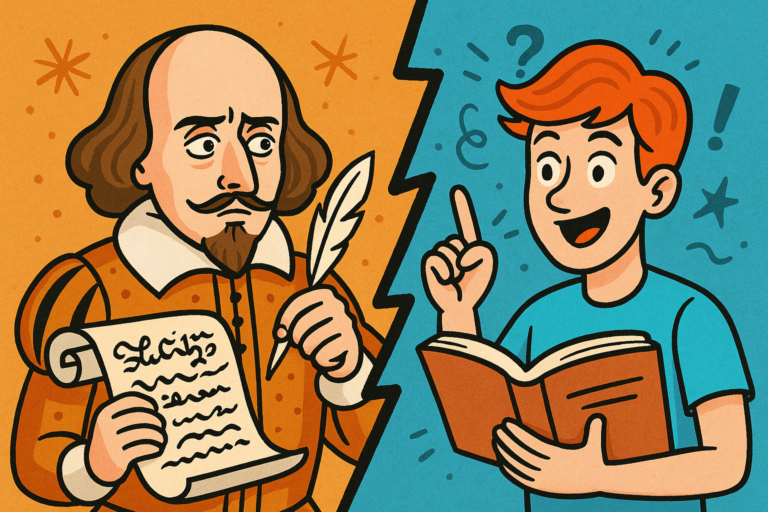The Mystery Of Authors Who Wrote One Famous Novel And Then Disappeared From The Limelight

Ever notice how some authors seem to write one absolutely unforgettable novel… and then disappear?
Not just from bestseller lists, but from the entire literary conversation. It’s like they drop a masterpiece and vanish into the fog, leaving us wondering what happened.
I’ve always been fascinated by that pattern—not the commercial flukes, but the writers whose single book ends up becoming a cornerstone of literary culture. Think To Kill a Mockingbird, Invisible Man, Wuthering Heights. These aren’t just good books. They’re seismic.
So I started digging, not as an academic, but as a curious (and mildly obsessed) content writer who wanted to get beyond the usual speculation.
What I found is a complex tangle of pressure, psychology, industry quirks, and even intentional silence.
In this piece, I’m going to unpack some of those layers—and maybe offer a few angles that even seasoned readers haven’t fully considered yet.
Dissecting the Vanishing Act – Why Do Some Authors Stop at One?
So here’s the thing that surprised me most when I started researching this: writing a great novel isn’t always the hard part—it’s surviving it.
There’s this myth that if someone’s talented enough to write a classic, the next book should just… flow. But when you look closer, that’s rarely the case. Let’s talk about a few key reasons why some authors just don’t go back for round two.
1. The Psychological Toll of Sudden Success
This isn’t just about burnout—it’s about identity. When Harper Lee published To Kill a Mockingbird in 1960, the book exploded.
She won a Pulitzer, got swept up in literary fame, and then essentially went radio silent for 55 years (until the controversial release of Go Set a Watchman, which was actually a first draft of Mockingbird).
People often say she got overwhelmed by success—but it’s more complex. She reportedly didn’t want to be defined by one book, yet couldn’t escape it. That’s a heavy thing for any writer to carry.
Success, in these cases, can become a trap—a creative high bar so intimidating that it kills the instinct to write again.
2. The Industry Isn’t Always a Cheerleader
This one blew my mind a bit: the publishing world isn’t always designed to nurture “second acts.” For debut authors, there’s often a ton of editorial support, marketing push, and curiosity.
But after a breakout success, the pressure shifts. Editors want “more of the same, but better.” Publishers worry about risking the brand. And sometimes, authors get boxed into a category they never asked for.
Take Ralph Ellison. Invisible Man (1952) was groundbreaking—socially, stylistically, everything. He won the National Book Award, and expectations for a second novel were sky-high.
But that book never came—not really. Ellison worked on it for decades, but perfectionism and constant editorial reshuffling turned it into a literary ghost. Some chapters surfaced posthumously, but the follow-up never lived as a cohesive whole. The industry, in a way, both made him and buried him.
3. Life Happens (And Sometimes, That’s the Point)
There’s also the deeply human side of this. Some authors just don’t want to keep publishing, and that’s not failure—it’s choice.
Margaret Mitchell, for instance, wrote Gone with the Wind and then refused to write another novel. She said everything she wanted to say, and that was that. It wasn’t insecurity—it was finality.
Then there’s John Kennedy Toole, whose case is as tragic as it gets. A Confederacy of Dunces wasn’t even published in his lifetime; it was his mother who championed it posthumously.
But Toole’s struggle to get it published contributed to his mental health decline, and he died by suicide before he saw its success. The story behind the book adds so many layers to its brilliance—and to the weight that single novels can carry for their authors.
These aren’t just flukes or footnotes.
They’re part of a pattern, and they say a lot about the intersection of genius, pressure, and silence. And I think there’s something oddly beautiful in the idea that one novel can be enough—not just for readers, but for the writer too.
Iconic Cases – One Book, Everlasting Fame
Let’s get into the real meat of this: the authors whose single novels became literary monuments. These aren’t just one-off wonders; their works shaped the canon, stirred up culture, and created legacies that arguably benefited from their silence.
I’ve picked five key figures, and honestly, each one could have a whole book written about their one book.
1. Harper Lee – To Kill a Mockingbird (1960)
If we’re talking about one-book legends, Harper Lee is ground zero.
To Kill a Mockingbird didn’t just succeed—it reshaped the American literary landscape. It’s taught in classrooms, cited in legal discussions, and still sparks intense debates about race, morality, and justice.
What’s wild is that Lee never followed it up—at least not in a conventional sense. Sure, Go Set a Watchman appeared in 2015, but let’s be real: it was an early draft of Mockingbird, not a true second novel. Plus, its release was shrouded in controversy—questions about Lee’s consent and editorial manipulation still haven’t settled.
But here’s what gets me: her absence became part of her mythology. Lee turned down interviews, retreated from literary circles, and in doing so, allowed Mockingbird to stand alone, almost like an artifact. The silence made the novel feel sacred. If she had written five more books, would the first have held the same weight? I honestly don’t think so.
2. Ralph Ellison – Invisible Man (1952)
Ellison’s Invisible Man is a towering work—stylistically ambitious, politically bold, and still stunningly relevant. But despite decades of effort, he never completed a second novel in his lifetime. Parts of what he wrote were published posthumously as Juneteenth (1999) and later in a larger form as Three Days Before the Shooting…, but neither felt like a true follow-up in the traditional sense.
And yet, it’s not like Ellison stopped writing.
He just couldn’t finish.
According to biographers, he struggled with perfectionism and a sort of artistic paralysis—like his own novel had become too heavy a shadow to move past. That kind of pressure is hard to imagine unless you’ve felt it, and I think many of us underestimate just how debilitating literary success can be.
Still, the fact that Invisible Man remains his only complete novel only adds to its mystique. The book almost absorbs all of his unrealized potential, which weirdly amplifies its impact.
3. Emily Brontë – Wuthering Heights (1847)
Unlike some of the others on this list, Emily Brontë didn’t choose to write just one novel—she simply died too young to write another.
But Wuthering Heights is such a powerful and strange book that it stands in for an entire unwritten career.
Think about it: she created this brutally poetic, emotionally savage story that didn’t follow the romantic or moral expectations of the time. In fact, when it was first published, it horrified critics.
But over time, it became a cornerstone of the English literary canon, studied and analyzed to death, yet still defying easy interpretation.
Her early death gave the book this eerie aura, almost like a haunted manuscript.
We don’t know what Emily might have done next, and that not-knowing keeps Wuthering Heights alive in a way that’s different from her sister Charlotte’s more traditional literary arc. It’s a reminder that literary greatness doesn’t need a volume count.
4. Margaret Mitchell – Gone with the Wind (1936)
Mitchell’s only novel is probably one of the most successful debut novels in American history—commercially, culturally, and cinematically.
Love it or hate it (and it’s very polarizing), Gone with the Wind is huge. It’s part of the national conversation on Southern identity, race, war, and gender.
Mitchell never intended to write a sequel, and she stuck to that. When you read interviews and letters, she was pretty clear: she’d said what she wanted to say, and she didn’t need to say more.
That’s such a rare kind of resolve in an industry built on churning out the next thing. She refused to be turned into a brand.
And while the book’s politics are rightfully challenged today, its cultural footprint is undeniable. The fact that she never followed it up somehow freezes it in time, giving critics and readers a clean, standalone artifact to wrestle with.
5. John Kennedy Toole – A Confederacy of Dunces (1980, posthumous)
This one’s heartbreaking. Toole wrote A Confederacy of Dunces in the 1960s but couldn’t get it published.
The rejection devastated him, and he died by suicide in 1969. His mother then spent years trying to get his manuscript recognized, eventually convincing Walker Percy to read it. It was published in 1980 and went on to win the Pulitzer Prize.
The novel itself is riotous, grotesque, and weird in the best way. It’s a satire that shouldn’t work, but somehow does. The main character, Ignatius J. Reilly, is now iconic—an antihero for the literary misfit crowd.
Toole’s story is one of tragedy, but it’s also one of resurrection. His one novel became a cult classic precisely because there was nothing else. It’s a perfect storm of scarcity, myth, and posthumous discovery, and it makes you wonder how many other masterpieces are out there, waiting to be found.
What Their Silence Tells Us
Let’s zoom out a bit. These authors we’ve been talking about—Lee, Ellison, Brontë, Mitchell, Toole—they didn’t just write good books. They created events. Cultural moments. And the fact that they never followed them up changes how we read those books, talk about them, and teach them.
So what does that silence actually mean?
And why does it still matter?
1. Silence as Myth-Making
In literary culture, silence doesn’t mean nothing—it often means everything. When an author steps back (or passes away) after one book, we don’t get a “normal” career arc. There’s no decline, no late-career reinvention, no missteps. Just that one pure statement.
That vacuum gets filled fast—with speculation, biographical gossip, conspiracy theories, academic analysis. Silence becomes story. And stories become myth. Harper Lee’s silence let Mockingbird grow into a moral touchstone. Toole’s absence gave his novel the aura of a miracle. Ellison’s long struggle made his book feel like a precious, irreplaceable gem.
The absence becomes part of the author’s voice, which is wild when you think about it. It’s like they’re still speaking—just through silence.
2. The Literary Relic Effect
One thing I’ve noticed again and again is how these novels become literary relics. They’re not just texts anymore; they’re artifacts. They get framed, dissected, and revered because they stand alone. There’s no “minor work” to dilute the brand, no contradictions to resolve.
This makes the book feel bigger than it really is—sometimes dangerously so. To Kill a Mockingbird is a fantastic book, but it’s also been criticized for its “white savior” framing. And yet, because it’s Lee’s only book, readers often treat it as sacred, beyond reproach. That’s the downside of literary relics—they can become untouchable.
But at the same time, this isolation gives these books a kind of timeless energy. They’re frozen in their moment, which lets us study them with unusual clarity.
3. A Challenge to Capital-L Literary Success
We live in a culture (especially in publishing) that values output. More books, more followers, more panels, more visibility. But one-book authors force us to rethink that model. What if one truly great novel is enough? What if that is the success?
There’s something weirdly radical about that idea. Especially now, in an age of productivity hacks and constant self-promotion, the idea that someone could write one brilliant book and then vanish feels kind of rebellious.
I think Emily Brontë, in her quiet way, did that. So did Margaret Mitchell, in a much louder way. And John Kennedy Toole, heartbreakingly, had that choice made for him—but the result is the same: a single, unforgettable novel that stands defiantly alone.
4. The Reader’s Role in Shaping Legacy
Another angle I didn’t expect to find so compelling is how we, as readers, co-create these legacies. Our fascination with silence, with the mysterious author, actually sustains their fame.
Look at the sheer volume of Harper Lee fan theories. Or how Ellison’s incomplete manuscript got turned into not one but two posthumous books. We’re not just reading these novels—we’re keeping them alive by obsessing over what didn’t come after.
It’s a kind of collaborative authorship. Their silence leaves a gap, and we keep trying to fill it.
And Here’s the Thing…
None of this would matter if the books themselves weren’t really good. That’s the foundation. But when those stories are followed by silence, they become something more. They become echoes—resonating across time, shaped as much by what’s missing as what’s there.
And honestly?
That’s kind of beautiful.
One book.
One voice.
One moment.
And that’s enough.





